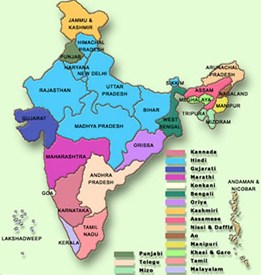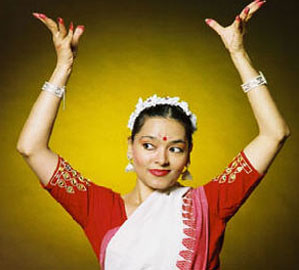
Ancient India Language Modern India Language
Communication in Ancient India
In the earliest days of India’s history, the people settled along a rich, fertile river they called the Sindh. This was the source of the word Hindu which is what the Persians called the people in the towns and cities along the Sindh river. In later times, it was named the Indus by the Greeks and this is why the British named the land India.
The Harappans, who lived along the Sindh or IndusRiver around 2500BCE, actually had a written language or script. Archaeologists know about this because they have found seals with this writing on them. However, they don’t know what the writing says because it still has not been decoded.
Here are some examples of seals from Harappa and Mohenjo Daro, two ancient Indus Valley cities. Harappa was located in the north part of the Indus valley and Mohenjo Daro was more in the southern part of the river valley. Both cities used this type of square terra cotta stamped or carved seals.

Many people believe that the earliest spoken language in India is called Tamil and is part of the Dravidian family of languages spoken mainly in the south of India. Others say the earliest language is called Sanskrit and was brought by the Aryans when they came into India from the northwest. Some say this is the oldest language in the world not just in India so it is sometimes called “the mother of all languages.”
Whichever came first, Sanskritis the name of the classic literary language of India. It is also the language of the Vedas, the scriptures of Hinduism, India’s major religion. It was considered to be a refined way of speaking especially for the well educated and higher Brahmin caste. Sanskrit was only an oral language for many centuries and then it became both a written and spoken language. Today Sanskrit is mainly a written language although many Sanskrit words are used by people especially in the practice of yoga.
| Here is a Sanskrit word: Namaste | It means Hello or Goodbye |
Click to hear what Namaste sounds like. Click on the submit button then the back button to return here.
When spoken to another person, it is common to make a slight bow with hands pressed together, palms touching and fingers pointed upwards, in front of the chest. The gesture can also be performed wordlessly and carry the same meaning.
Surprisingly, Sanskrit has very many similarities to European languages like ancient Latin and Greek as well as to Germanic languages. The English we speak and write comes from all of these root languages. “Father" in English compares to "vater" in German, "pater" in Latin, "patêr" in Greek, and "pitr" in Sanskrit.
But most often Sanskrit is used in religious ceremonies as a sound vibration called a mantra. By concentrating on the sound of the Sanskrit mantra, Hindus and others focus their mind on spiritual rather than worldly things. Chanting is the process of repeating a mantra.
A favorite mantra of people practicing Hinduism or Buddhism is Om  or sometimes spelled AUM.
or sometimes spelled AUM.
This is what the word looks like in Sanskrit.
These are two Sanskrit mantras that start with the word Om.
1. Om Mani Padme Hum which is a Buddhist mantra asking blessings from a divine being
2. Om Namah Shivaya which is a mantra that honors the divine being inside of you.
Sanskrit has also made its way into Western pop music. Madonna recorded a song on her album “Ray of Light” entitled “Shanti/Ashtangi” and composer John Williams featured a choir singing in Sanskrit for the Star Wars Episode I: The Phantom Menace.
Because Sanskrit was the language of the upper class and was very difficult to learn, an easier form called Prakit was developed that was used in everyday life. When you read about the Buddha on the Beliefs page, you will see that he taught his special teachings using Prakit so everyone could understand him.


